How Many Diapers Does A Baby Go Through In A Year?
Have you ever found yourself knee-deep in diaper duty, wondering just how many of those tiny necessities your little one will go through in a year? The question, how many diapers does a baby go through in a year, is a common conundrum for many new parents, as the world of diapering can seem overwhelming at first glance. From those newborn blowouts to the constant changes as your baby grows, the sheer volume of diapers can be a surprising revelation.
As you navigate the diaper aisle maze, fret not! Our definitive guide is here to provide you with expert insights and practical tips on the diapering journey ahead. We’ll delve into the diapering habits of babies from infancy to their first birthday, helping you understand the diaper size spectrum, usage patterns, and how to make informed choices when building your diaper stockpile.
Prepare to gain a comprehensive understanding of the diaper landscape, from cloth to disposable options, and unravel the mysteries of how to keep up with your little one’s evolving needs. Join us as we unravel how many diapers does a baby go through in a year and equip you with the knowledge to ensure your diaper stash never runs dry.
Introduction to Diaper Usage

Understanding the ins and outs of diaper usage is essential for new parents. As you embark on the journey of parenthood, knowing how many diapers does a baby go through in a year can save you from last-minute diaper runs and ensure your baby stays comfortable and dry.
Diapers are a fundamental part of your baby’s early years, and their consumption varies based on several factors. By gaining insights into diaper usage patterns and planning your stockpile accordingly, you can always be prepared.
Managing diaper usage involves more than just counting the number of diapers. Factors like feeding methods, age, and individual baby habits can affect the frequency of diaper changes. Additionally, your choice between disposable and cloth diapers impacts the quantity required.
In this guide, we’ll explore the average number of diapers used by different age groups of babies, provide tips on estimating your baby’s needs, compare disposable and cloth diapers, and offer practical advice for efficient diaper usage. So let’s dive in and ensure you have a solid foundation in diaper usage for your little one’s first year.
Understanding the average number of diapers used by babies in different age groups is key to planning your diaper stockpile effectively. Here’s a breakdown of diaper consumption on a monthly basis for newborns, infants, and toddlers:
Newborns (0-3 months)
During the first three months, babies typically go through the highest number of diapers. Newborns generally require up to 10 diaper changes per day, amounting to around 300 diapers per month. It’s important to note that newborns have smaller bladders and tend to pass stools more frequently compared to older infants.
Infants (4-9 months)
As babies grow and develop, their diaper usage patterns change. On average, infants between four to nine months old typically use around 8 diapers per day, which translates to approximately 240 diapers per month. At this stage, babies start to gain better control over their bladder functions, resulting in slightly fewer diaper changes.
Toddlers (10-12 months)
By the time babies reach 10 to 12 months, their diaper usage decreases further. Most toddlers require about 6-7 diaper changes per day, adding up to roughly 180-210 diapers per month. As toddlers begin to transition into potty training, their bladder capacity increases, resulting in fewer diaper changes.
It’s essential to keep in mind that these are general guidelines, and every baby’s diaper consumption may vary based on individual factors such as feeding method, metabolism, and personal habits. Some babies might require more frequent diaper changes, while others may need fewer changes.
By estimating the average diaper usage within each age group, you can plan your diaper stockpile accordingly. It’s recommended to have a supply of diapers ready in advance to avoid running out. Additionally, consider factors like discounts, sales, and bulk-buying options to maximize cost savings.
Remember, keeping your baby clean, dry, and comfortable is essential for their well-being. Regularly check for signs of discomfort, and adjust the number of diaper changes as needed.
Factors Affecting Diaper Usage
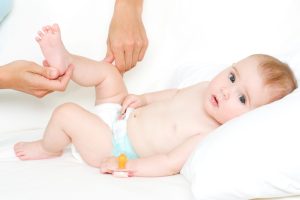
When it comes to diaper usage, several factors can influence the number of diapers your baby will go through each day. Understanding these factors can help you better estimate and plan for your diaper stockpile. Here are some key factors to consider:
Feeding Methods
The method of feeding your baby can impact diaper usage. Breastfed babies tend to have more frequent bowel movements, resulting in more diaper changes compared to formula-fed babies. Breast milk is quickly digested, leading to more frequent wet diapers as well. On the other hand, formula-fed babies may have fewer bowel movements and slightly less frequent diaper changes.
Age
As your baby grows, their diaper usage patterns will change. Newborns typically go through more diapers due to their small bladder capacity and frequent feedings. As they get older, their bladder capacity increases, resulting in fewer diaper changes. On average, newborns may require up to 12 diapers per day, while older infants and toddlers may only need around 6-8 diapers per day.
Individual Baby Habits
Each baby is unique, and their individual habits can influence diaper usage. Some babies have regular bowel movements, while others may have more irregular patterns. Additionally, some babies are more sensitive to wet diapers and may require more frequent changes to maintain comfort and prevent rashes.
It’s important to remember that these factors can vary from baby to baby. Monitoring your baby’s diaper usage patterns and making adjustments accordingly will ensure that you always have an adequate supply of diapers on hand.
Planning Your Diaper Stockpile
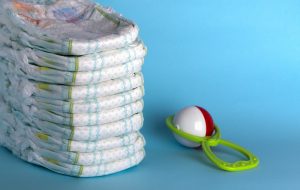
Planning and stocking up on diapers for your baby’s first year is crucial to ensure you never run out. Here are some tips to help you estimate and plan for the number of diapers you’ll need:
- Determine the Average Diaper Usage
On average, newborns go through 8 to 12 diapers per day, while older babies may require around 6 to 8 diapers daily. Keep in mind that every baby is different, so these numbers may vary.
- Calculate for the First Month
Newborns tend to have more frequent diaper changes, so plan for the higher end of the average range during the first month. Stock up on around 300 diapers to cover this period.
- Consider the Changing Needs
As your baby grows, they will transition to different diaper sizes. Estimate how long your baby is likely to stay in each size, considering factors like growth rate and weight gain.
- Account for Overnight Diapers
Many parents prefer using overnight diapers for better absorbency during sleep. Be sure to factor in the number of overnight diapers needed separately.
- Prepare for Growth Spurts
Babies experience growth spurts that may require a sudden change in diaper size. Keep a few larger-sized diapers on hand to accommodate these periods.
- Buy in Bulk
Purchasing diapers in bulk can often save you money. Look for deals, discounts, or consider joining a subscription service to receive regular diaper deliveries.
Remember, it’s better to be overprepared than underprepared when it comes to diaper stockpiling. However, keep in mind that your baby’s needs may vary, so monitor their diaper consumption and adjust accordingly. By planning ahead, you can ensure that you have an adequate supply of diapers to comfortably meet your baby’s needs throughout their first year.
Disposable vs. Cloth Diapers
When it comes to choosing between disposable and cloth diapers, there are several factors to consider. Both options have their advantages and disadvantages, and it ultimately comes down to personal preference and what works best for your family. Let’s explore the key differences and usage requirements of disposable and cloth diapers.
Disposable Diapers
Disposable diapers are a popular choice for many parents due to their convenience. Here are some advantages of using disposable diapers:
- Ease of Use
Disposable diapers are ready to use right out of the package. Simply remove the dirty diaper, discard it, and put on a clean one.
- Convenience
Disposable diapers are readily available in most stores and can be easily purchased online, making restocking a hassle-free process.
- Absorbency
Disposable diapers often have excellent absorbency, helping to keep your baby dry for longer periods.
- Ideal for Travel
Disposable diapers are convenient for travel and outings since they can be easily disposed of when soiled.
- Reduced Laundry
With disposable diapers, there is no need for frequent washing, which can save time and effort.
However, disposable diapers also have some drawbacks:
- Environmental Impact
Disposable diapers contribute to landfill waste and take a long time to decompose, leading to environmental concerns.
- Higher Cost
Over the course of your baby’s first year, the cost of disposable diapers can add up. It is essential to consider your budget when making your decision.
Cloth Diapers
Cloth diapers have gained popularity due to their eco-friendly nature and potential cost savings. Here are some advantages of using cloth diapers:
- Cost Savings
Although the upfront cost may be higher, cloth diapers can save you money in the long run, especially if you plan to use them for multiple children.
- Environmental Friendliness
Cloth diapers are reusable, reducing waste and minimizing their impact on the environment.
- Gentle on Baby’s Skin
Cloth diapers are often made of natural materials, which can be gentle on your baby’s delicate skin and reduce the risk of irritation.
However, cloth diapers also come with some considerations:
- Increased Laundry
Cloth diapers require frequent washing, which means you need to have a reliable laundry routine to keep up with the demand.
- Bulkier and Less Absorbent
Cloth diapers tend to be bulkier than disposables, and they may not have the same level of absorbency, requiring more frequent changes.
Ultimately, the decision between disposable and cloth diapers depends on your priorities and lifestyle. Some parents choose to use a combination of both, utilizing disposable diapers for convenience and cloth diapers for when they are at home. Consider your unique needs and preferences before making a decision.
Diaper Size Guide
Choosing the right diaper size for your baby is crucial for a comfortable fit and effective leakage protection. Here’s a handy guide to help you navigate the various diaper sizes and determine the perfect fit for your little one.
Newborn (NB) Size
Newborn-sized diapers are specially designed for the first few weeks of your baby’s life. They offer a snug fit and a cut-out for the umbilical cord stump. These diapers are suitable for babies weighing up to 10 pounds (4.5 kilograms). It’s a good idea to stock up on a few packs of newborn-sized diapers, as newborns typically go through about 8 to 12 diapers per day.
Size 1
Once your baby outgrows the newborn size, it’s time to move on to size 1 diapers. These diapers are suitable for babies weighing 8 to 14 pounds (3.6 to 6.4 kilograms). Keep in mind that every baby is different, and some may transition to size 1 sooner or later than others. A general rule of thumb is to switch to the next size when the current diapers are consistently snug or leave red marks on your baby’s skin.
Size 2
As your baby continues to grow, size 2 diapers come into play. These diapers are typically suitable for babies weighing 12 to 18 pounds (5.4 to 8.2 kilograms). Remember to consider the weight and waist size of your baby when determining the appropriate diaper size.
Size 3 and Beyond
As your baby progresses through the first year, you’ll find yourself transitioning to larger diaper sizes. Size 3 diapers generally accommodate babies weighing 16 to 28 pounds (7.3 to 12.7 kilograms). Sizes 4, 5, and 6 cater to higher weight ranges to ensure a comfortable and secure fit for your growing baby.
How to Determine the Right Size
To determine the right diaper size for your baby, consider their weight and waist size. Consult the packaging or the diaper manufacturer’s guidelines for size recommendations based on your baby’s weight. Additionally, pay attention to any signs of leakage or discomfort that may indicate a need to move up to the next size.
Remember, each baby is unique, and growth patterns can vary. Regularly assess and adjust your diaper size to ensure your baby’s comfort and protection.
Diaper Changing Frequency
Maintaining proper diaper changing frequency is essential for ensuring the hygiene and well-being of your baby. Regular diaper changes not only prevent rashes and discomfort but also keep your little one clean and healthy. So, how often should you change your baby’s diapers?
- Newborns
During the first few weeks, newborns typically require frequent diaper changes, around 8 to 12 times a day. Their tiny bladders and the frequent passage of urine and stool necessitate more frequent changes to prevent irritation and diaper rash.
- Infants
As your baby grows, their bladder capacity increases, and the frequency of diaper changes can decrease slightly. On average, infants may need around 6 to 8 diaper changes per day. However, it’s important to monitor for wet diapers and promptly change them to maintain dryness and prevent discomfort.
- Toddlers
Once your baby becomes a toddler, they may require fewer diaper changes, approximately 4 to 6 times a day. However, every child is different, so it’s essential to pay attention to your little one’s signals of discomfort or a soiled diaper.
Remember, these are general guidelines and may vary depending on your baby’s habits, the intensity of their activities, and even weather conditions. It’s crucial to check the diaper frequently and change it immediately when it feels wet or soiled. Additionally, always clean the diaper area thoroughly during each change to prevent irritation and infection.
By maintaining a consistent diaper-changing routine, you can promote your baby’s comfort and hygiene, preventing diaper-related discomfort and ensuring their overall well-being.
Diaper Usage Tips and Tricks: How Many Diapers Does A Baby Go Through In A Year?
When it comes to diaper usage, every parent wants to ensure efficiency and minimize wastage. Here are some practical tips and tricks to help you make the most of your diaper supply:
- Size it right
Using the correct diaper size is essential for a snug fit and leak prevention. Refer to the diaper size chart provided by the manufacturer and consider your baby’s weight and age to determine the appropriate size.
- Change frequently
Frequent diaper changes are crucial to maintain hygiene and prevent diaper rash. Aim for changing diapers every 2 to 3 hours or whenever they are soiled. Remember, a wet diaper can cause discomfort and irritation for your baby.
- Optimize absorbency
To maximize absorbency, position the diaper properly. Make sure the waistband is snugly secured around your baby’s waist, and the leg cuffs are positioned around the thighs to prevent leaks.
- Diaper creams and powders
Using diaper creams or powders can help protect your baby’s delicate skin. Apply a thin layer of baby-safe diaper cream or sprinkle a small amount of talcum-free powder to prevent diaper rash and soothe any existing irritation.
- Wipe with care
When cleaning your baby during diaper changes, use gentle baby wipes or a soft cloth dampened with warm water. Avoid using wipes with alcohol or harsh chemicals, as they can cause skin irritation.
- Double up at night
For longer stretches, consider using overnight diapers or doubling up on regular diapers to provide extra absorbency during sleep. This can help reduce the chance of leaks and provide your baby with a comfortable night’s sleep.
- Stay organized
Keep your diaper changing area well-stocked and organized. Have diapers, wipes, diaper rash cream, and disposal bags within easy reach. This helps streamline the changing process and minimizes the need to search for supplies.
- Monitor diaper weight
Keep track of your baby’s diaper weight gain. Sudden significant weight fluctuations may indicate a health concern or the need to adjust diaper sizes.
Remember, each baby is unique, and their diaper usage may vary. By following these tips and tricks, you can promote efficient diaper usage and ensure your little one stays comfortable and dry throughout the day.
Diaper Budgeting
When it comes to parenting, budgeting is a crucial aspect to consider, and diapering is no exception. As a new parent, it’s essential to plan your diaper budget wisely and find ways to maximize cost savings. Here are some helpful tips to assist you in budgeting for diapers and ensuring you make the most of your money:
- Calculate Your Needs
Start by estimating the number of diapers your baby will require each day. On average, newborns need about 8 to 12 diapers per day, while older babies may require around 6 to 8 diapers. Multiply this number by the number of days in a month to determine the monthly diaper usage.
- Compare Prices
Research and compare prices across different brands and stores to find the most affordable options. Consider purchasing diapers in bulk or using subscription services that offer discounts for regular deliveries.
- Take Advantage of Discounts and Coupons
Keep an eye out for sales, discounts, and coupons offered by retailers or diaper brands. Subscribe to newsletters, join loyalty programs, or follow social media accounts of baby stores to stay updated on these offers.
- Consider Cloth Diapers
Using cloth diapers can be a cost-effective option in the long run. While the upfront cost may be higher, the savings can be substantial over time, especially if diapering multiple children. Additionally, cloth diapers are reusable, which reduces ongoing expenses.
- Use Diaper Samples and Trial Packs
Take advantage of diaper samples and trial packs offered by manufacturers. This way, you can experiment with different brands without committing to large quantities until you find the one that suits your baby best.
- Practice Efficient Diaper Usage
To minimize waste, ensure you change diapers only when necessary. Regularly check for signs of wetness or soiling, but avoid excessive diaper changes, as this can lead to unnecessary expenses.
With careful planning and smart choices, you can effectively manage your diaper budget and save money without compromising on quality. Remember, every penny saved counts, and a well-planned diaper budget will help you navigate through your baby’s first year with ease.
Environmental Impact of Diapers
Diapers, whether disposable or cloth, have an undeniable impact on the environment. Understanding the environmental considerations associated with diaper usage can help parents make informed choices.
Disposable Diapers
Disposable diapers are convenient, but they have a significant environmental footprint. Here are some factors to consider:
- Landfill Waste
Disposable diapers contribute to landfill waste due to their slow decomposition rate. It’s estimated that a single disposable diaper takes up to 500 years to break down.
- Raw Material Consumption
The production of disposable diapers requires significant amounts of wood pulp, petroleum-based plastics, and chemicals. This extraction and manufacturing process contributes to deforestation and fossil fuel consumption.
- Water Usage
The production of disposable diapers requires large quantities of water, from sourcing raw materials to manufacturing and cleaning processes.
However, advancements in eco-friendly disposable diapers are emerging. Some brands offer diapers made from sustainable materials and without harsh chemicals, reducing their impact on the environment.
Cloth Diapers
Cloth diapers offer a more sustainable alternative to disposables. Consider the following points:
- Resource Consumption
While cloth diapers require water and energy for laundering, the overall resource consumption is typically lower than the production of disposable diapers.
- Waste Reduction
Cloth diapers can be reused multiple times, reducing the amount of diaper waste sent to landfills. Proper care and maintenance of cloth diapers can extend their lifespan.
- Natural Fabrics
Cloth diapers made from organic cotton or hemp provide an eco-friendly option, minimizing exposure to harmful chemicals. Additionally, biodegradable liners can be used to aid in waste disposal.
If opting for cloth diapers, it’s important to consider the energy and water consumption associated with washing and drying. Utilizing energy-efficient and water-saving methods can help minimize the environmental impact.
Overall, both disposable and cloth diapers have pros and cons in terms of their environmental impact. Choosing the best option for your family depends on weighing these factors and considering personal preferences and lifestyle.
Remember, regardless of the diaper type chosen, proper diaper waste disposal and responsible usage can further reduce the environmental impact.
Managing diaper usage effectively is crucial for every parent. By understanding the average number of diapers used by babies in their first year and planning your diaper stockpile accordingly, you can ensure that you never run out of diapers.
7 Takeaways: How Many Diapers Does A Baby Go Through In A Year?
- Estimate the number of diapers needed
Keep in mind that the average newborn uses about 8-10 diapers per day, while infants and toddlers may require 6-8 diapers per day.
- Consider factors affecting diaper usage
Feeding methods, age, and individual baby habits can impact diaper consumption. Breastfed babies may have more frequent diaper changes compared to formula-fed infants.
- Choose the right diaper size
Diapers come in different sizes, ranging from newborn to larger sizes. It’s important to choose the appropriate size for your baby to ensure a proper fit.
- Opt for disposable or cloth diapers based on your needs
Disposable diapers offer convenience, while cloth diapers are a more cost-effective and eco-friendly option. Consider your lifestyle and preferences when making this decision.
- Create a diaper budget
Diapers can be a significant expense, so it’s important to plan your budget and look for cost-saving opportunities such as bulk purchases or coupon deals.
- Practice efficient diaper-changing habits
Change diapers frequently to maintain hygiene and prevent rashes. Use diaper rash creams or powders as needed.
- Be conscious of the environmental impact
Disposable diapers contribute to landfill waste, while cloth diapers require energy and water for washing. Consider the environmental implications when choosing between the two.
By following these tips and being proactive in managing diaper usage, you can ensure a smooth diapering experience for both you and your baby throughout their first year and beyond. Remember, every baby’s needs may vary slightly, so adjust accordingly and seek medical advice if needed. We hope your question, “How Many Diapers Does A Baby Go Through In A Year?” is answered in quite some detail here. For any further questions, please add a comment below!



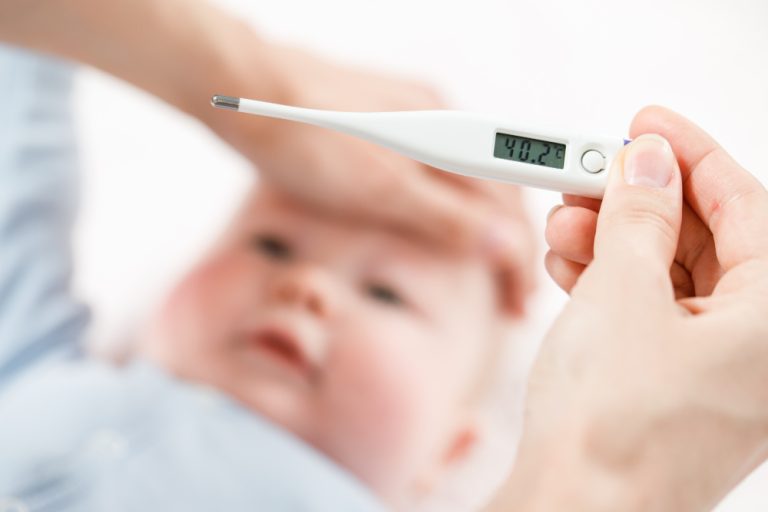
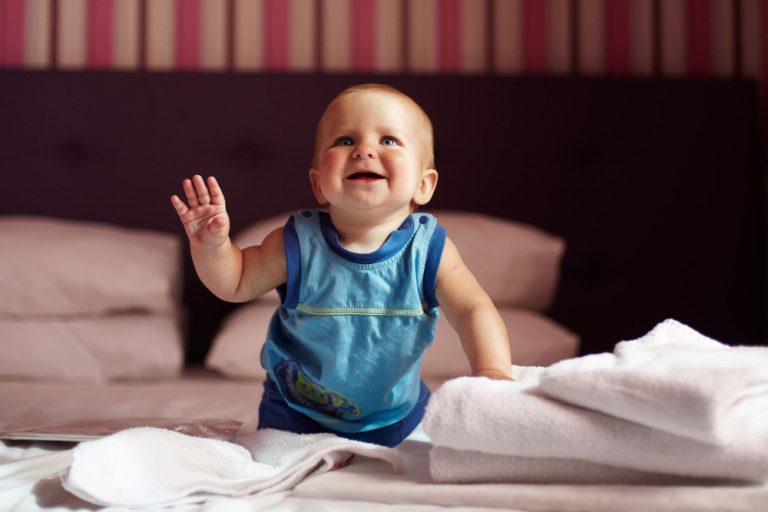
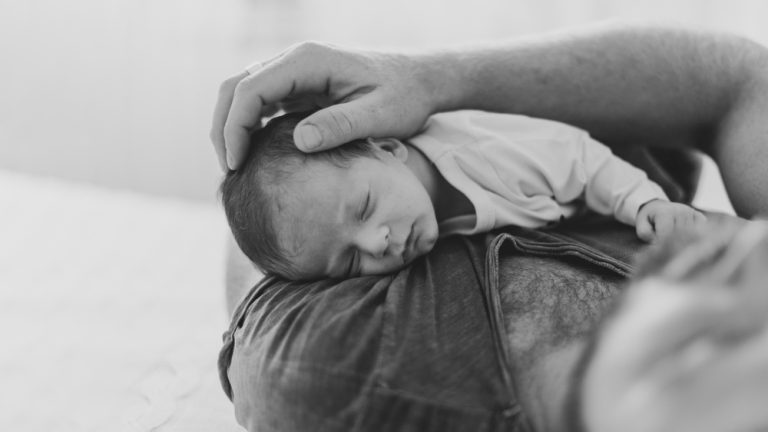


I like forgathering utile information, this post has got me even more info!
Thanks a lot, check more of our blogs and share as well.